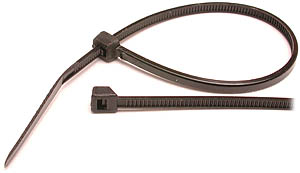 I've resolved to bike more to work, but I just had a teeny bike rack on the back—the kind that only attaches to the seat post, so no way to attach panniers (which are very expensive anyway!).
I've resolved to bike more to work, but I just had a teeny bike rack on the back—the kind that only attaches to the seat post, so no way to attach panniers (which are very expensive anyway!).A friend suggested I bolt a milk crate onto the rack, but that seemed not the right dimensions for my cargo needs, and bike trunk bags didn't seem big enough as well as costly, so I resolved to look around for something that would suit me.
Voila! A wire "in" basket that I had dumpster dived from the library's trash bin (I already have two others). Perfect, and it even had a little cutaway to leave more room for the back of the seat.
The only question was how to attach it. Bolts, washers and nuts? Too clumsy-looking, and the open mesh on the bottom of the basket might make it difficult to find a washer big enough to hold the thing on.
Plastic zip ties to the rescue. My local downtown hardware store sells them for seven cents apiece. In less than five minutes the basket was secured to the rack, AND I used another tie to put my red flasher on the back of the basket for better visibility. Another two ties solved another problem I was having—that the bike had no good place to put the mounting bracket for my frame pump. All that joy for fifty cents.
And here's the finished product, looking like it was actually meant to be attached to a bicycle:

And a detail shot showing the four zip ties holding the thing on:

I think the end result looks not too shabby; prettier than a milk crate, anyway. I'll take it on a road test when I go to work tomorrow.
